Graphics Design
13.Exploring the Latest Trends in Photo Editing Software

Exploring the Latest Trends in Photo Editing Software
Here’s an overview:
-
Photo Editing Software Trends- An Introduction
• Integration of AI and Machine Learning in Photo Editing Software.
• Mobile Editing Apps: The Changing Environment
• The New Age of Non-Destructive Editing
• Collaborative and Cloud Editing Platforms
• Greater automation and streamlining of workflows.
• A Prevalence of Augmented Reality in Photo Editing.
• Photo Editing Software Trends- An Introduction
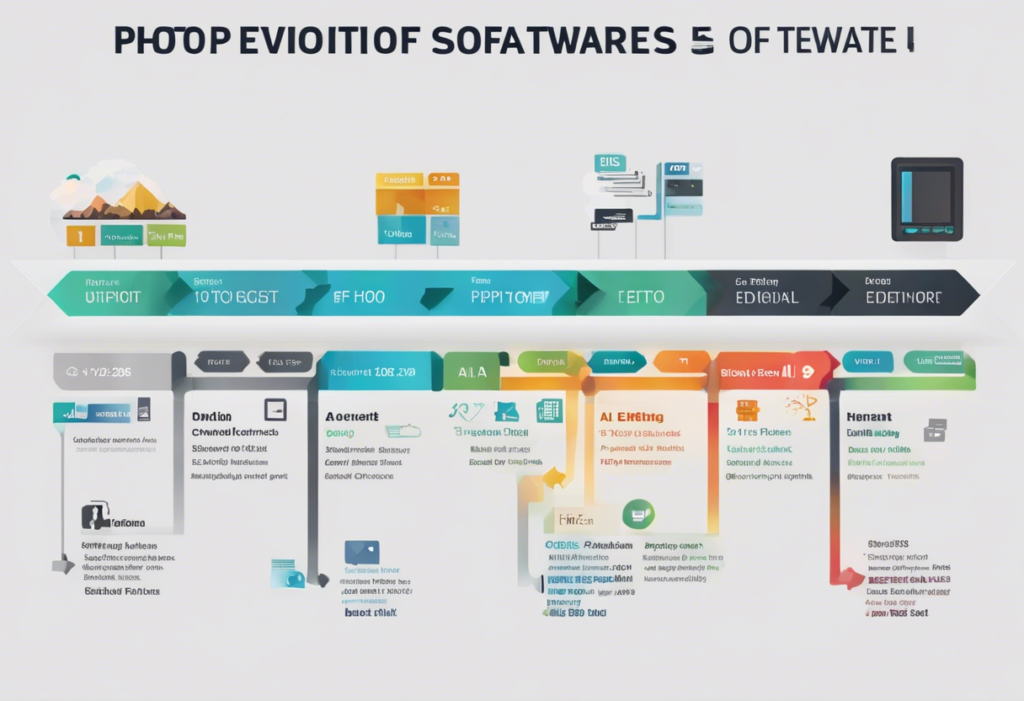
Exploring the latest trends in photo editing software i have been extremely attentive to recent innovations in photo editing software, and the ever-changing technology is really striking in meeting the needs of beginners, experts and intermediates. undefined
• Artificial Intelligence Integration:
Exploring the latest trends in photo editing software is more and more on AI to simplify and automate complex tasks like images enhancement, object identification and face recognition. It is not only time-saving but also kind of advanced editing experience.
• Mobile Editing Apps:
Along with the evolution of smartphone photography is an increased need for user-friendly and robust mobile photo editing software. On the other hand, developers are developing mobile versions of the most popular desktop software to meet the requirements of the users who love editing when out.
• Non-Destructive Editing:
The non-destructive editing approach lets users edit an image without ironing out the original file. This has become a trend due to the fact that it permits photographers to try out diverse edits while still preserving what the original image was.
• Subscription-Based Models:
Given that majority of exploring the latest trends in photo editing software companies are now using the subscription model, they are ensuring their users get updates regularly, cloud storage, as well as other additional features which are paid for periodically. This way, customers are in a habit of using more and more up-to-date tools and enhancements after a while.
• Collaborative Editing Tools:
Exploring the latest trends in photo editing software for photo editing are moving towards collaborative features, so that the people can work on the same-time project. This approach is extremely useful for teams that are participating on projects requiring the input from different editors.
Exploring the latest trends in photo editing software With technology heading on to new frontiers, I am eager to witness the impact of these trends on how the photo editing software will evolve.
• Integration of AI and Machine Learning in Photo Editing Software
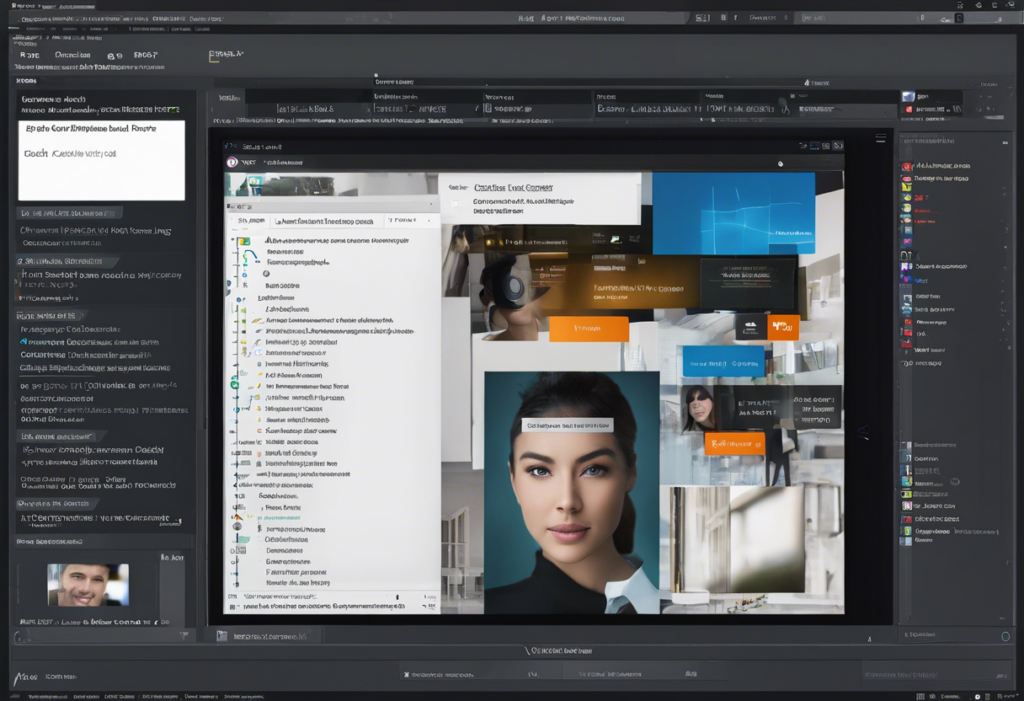
Exploring the latest trends in photo editing software For me, perhaps the most interesting trend in photo editing software at the moment is the use of AI and the machine learning technologies. This transformation opened the doors for machine learning technology to be incorporated in developing algorithms that recognize and edit photos smartly.
• Automated Enhancements: Exploring the latest trends in photo editing software Through AI algorithms, the image editing tools can now fix an image automatically by adjusting the brightness, contrast, and color balance to suit the picture’s content. This save me both time and power with the same end as the professional images.
• Content-Aware Tools: Exploring the latest trends in photo editing software AI algorithms result in content-aware tool, which can professionally understand the elements of a photo, including faces or even object, then make specific improvements only on those areas. Such accuracy being possessed by the software, the editing procedure is made much less complicated and efficient.
• Smart Filters and Effects: Exploring the latest trends in photo editing software Machine learning algorithms learn such that they can predict filters and effects for each photo by assessing user behavior and preferences. Given that personalized recommendation system, I have been introduced to new creative solutions while editing my work.
• Noise Reduction and Image Restoration: Exploring the latest trends in photo editing software AI noisy redution algorithms can successfully filter grainy images by analyzing the flow of the picture and removing the noise while retaining the image data. Furthermore, machine learning methods are capable of restoring old or damaged photos by reconstructing the missing sections based on information gathered from the patterns employed by similar pictures.
• Improved Workflow: Exploring the latest trends in photo editing software AI and machine learning based photo editing software now uses a workflow that is both easier and more fluid. To my knowledge, those tasks that used to require for manual adjustments, can be automated, hence, free my time for a more creative part of the editing.
Exploring the latest trends in photo editing software to sum up, Artificial intelligence and machine learning have not just increased the abilities of these tools but also have made the photo editing much more simple, accessible for all users like me.
• Mobile Editing Apps: The Changing Environment
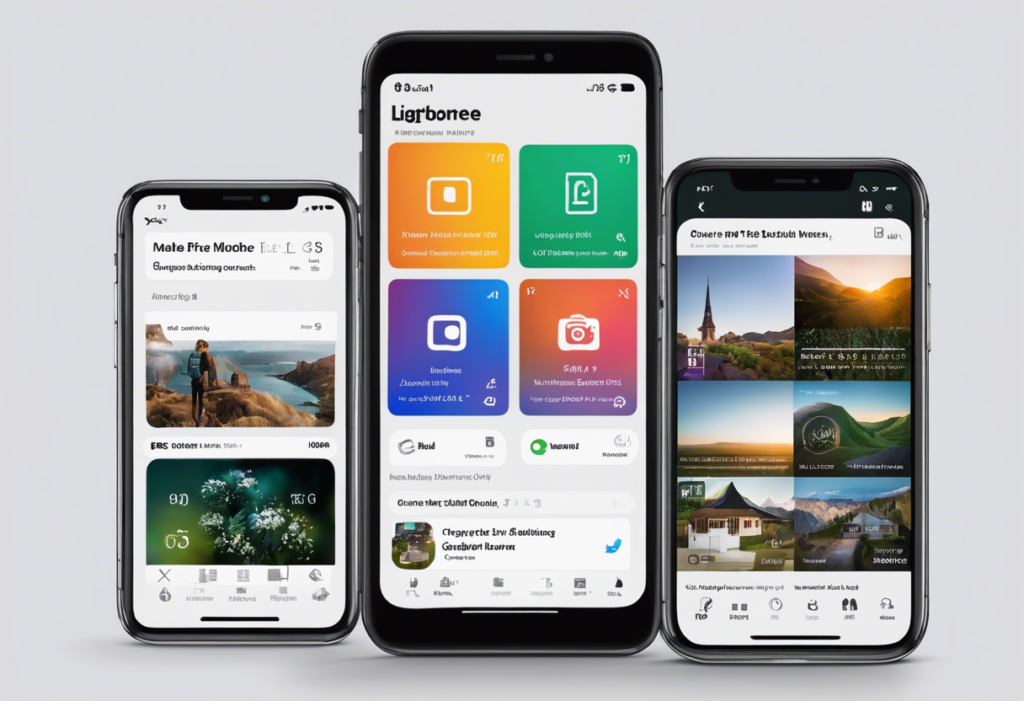
It is quite noticeable the way mobile editing apps has changed along with new functions and upgrades that allows on-the go editors to meet the increasing demand of travelers. undefined
• AI-Powered Features: Exploring the latest trends in photo editing software with the rise of mobile editing apps, AI technologies tend to be increasingly implemented to provide the best user experience possible to each user. From simple photo enhancement to artificial object identification, the AI algorithms embedded into mobile devices are substantially changing the way pictures are edited.
• Augmented Reality (AR) Integration: Exploring the latest trends in photo editing software adding AR technology to mobile editing tools is now making it possible to come up with new kinds of images for users. AR filters, effects, as well as overlays help in the complex process of editing which promises a more interactive and immersive experience.
• Cloud-Based Editing: Exploring the latest trends in photo editing software the development of cloud-based editing in mobile apps is a cherished trend. It lets users access their images anytime anywhere across diverse devices without any interruptions. By moving to a cloud-based editing, users get better and more convenient experience.
• Collaborative Editing: Exploring the latest trends in photo editing software some designed for mobile may come with a feature of collaborative editing so as you can work with people at the same time. It increases innovation and teamwork that are key in making the entire process much more social.
• Subscription Models: Now, a few mobile editing apps have adopted the subscription model of business, viz., allowing users to premium features and content in exchange for a recurring charge. Such a model ensures developers are paid for their work consistently and provided up to date information and correction.
Exploring the latest trends in photo editing software the wide spectrum of mobile cutting apps manifests itself as the shift towards more innovative and user-friendly approaches. However, such trends will be dictated by how successful developers are in incorporating such features in user-friendly apps that deliver more power to the users as they move them about.
• The New Age of Non-Destructive Editing-Exploring the latest trends in photo editing software
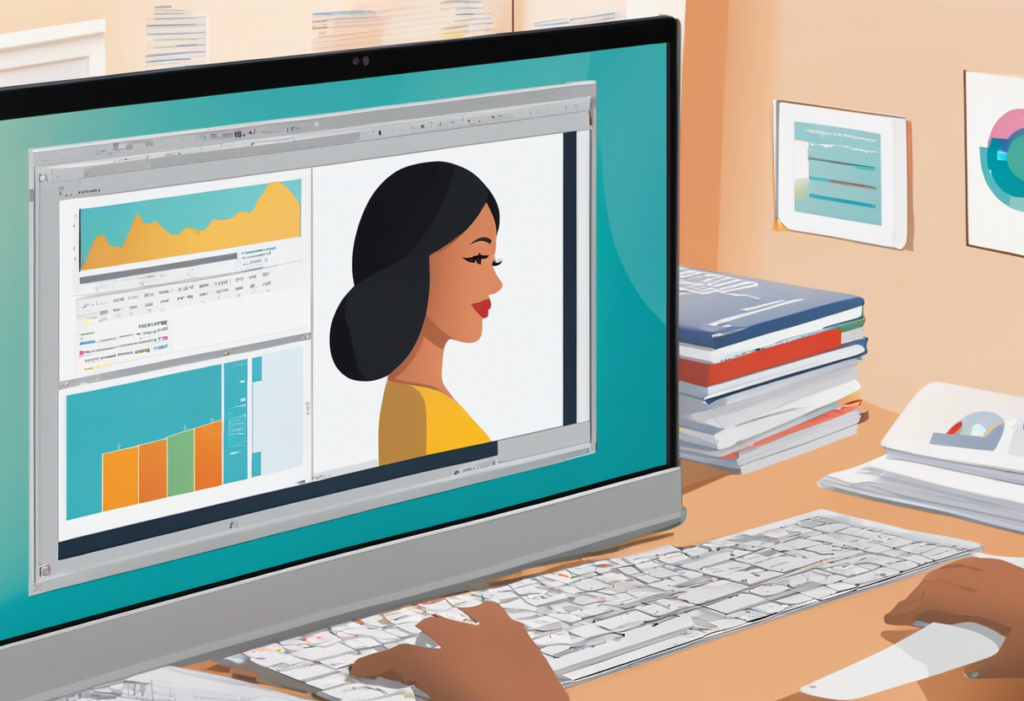
Exploring the latest trends in photo editing software i have observed a lot of advancements in the digital editing tools to support non-destructive editing capabilities. Consequently, this approach gives me the opportunity to modify an image without changing the original file which helps to maintain the image quality and allows me to play around with any settings without fear of losing very important details. The destructive editing tools have been replaced by non-destructive ones as the most of the modern photo editing software developers pay more attention to such features as adjustment layers and smart filters.
• Adjustment Layers: With help of adjustment layers, I can change the characteristics of the picture e.g. brightness, contrast and color saturation without touching the original image. It allows one to make an editing process more effective and efficient.
• Smart Filters: About smart filters in the photo software packages allows me to create a blur or a sharpen effect with non-destructive way. It is possible for me to activate or deactivate the filters, modify their parameters, or eliminate them all together while there’s no image data loss.
Non-destructive editing is not only to ease the editing workflow but also to improve the efficiency also. If necessary, I can return to my edits and do amendments anytime later, even after my file has been saved. This helps you when you have to do complex edit or you are working together on and project.
Moreover the modern non-destructive editing is a game-changer in preventing any image degradation. Untouched original file gives me access to original data without any degradation of information because of frequent saving and at the end I can add up the best output.
As the technology of exploring the latest trends in photo editing software advancement, I expect the non-destructive editing features to soon become increasingly more complex and widely available. Incorporating this trend became part of my editing process which gave me more confidence in my work to produce high-quality images.
• Collaborative and Cloud Editing Platforms
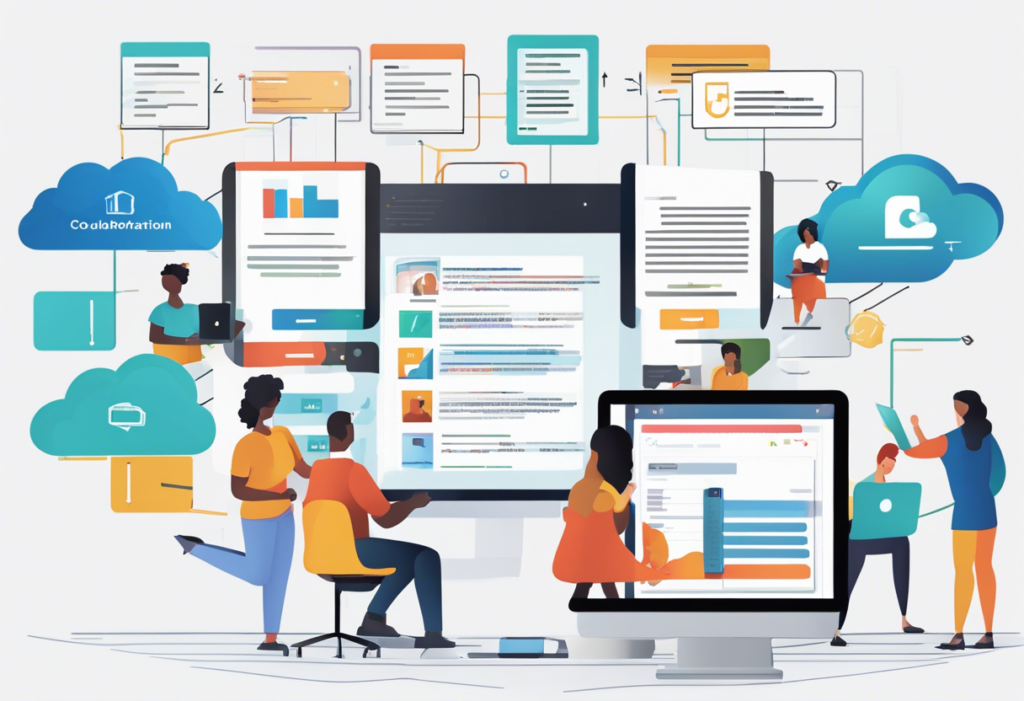
Exploring the latest trends in photo editing software Collaborative editing platforms are definitely at the forefront of evolution when it comes to photo editing. These types of platform offer an opportunity for the team members to collaborate on the same project while working at the same time, is boosting the teamwork spirit and productivity. undefined
• Real-Time Collaboration: Exploring the latest trends in photo editing software Teams of people who are working remotely or in different locations can edit photos together as they are being taken and, therefore, this is the perfect tool for them to use.
• Version History: Exploring the latest trends in photo editing software The platforms do this by registering the modifications made to the image and keep the web history which could be retrieved in case one needs to review or work on the image.
• Commenting and Feedback: Exploring the latest trends in photo editing software User can comment and feed-back on the photo directly and this makes it easier to make changes during the editing time.
Exploring the latest trends in photo editing software Online editing platforms are also now popular, providing the opportunity to work with photo editing tools and projects from anywhere at any time, as long as you have internet connection. undefined
1. Accessibility: I no longer need to install separate programs on various devices, nor copy files across devices manually.
2. Automatic Backups: Cloud platforms are commonly designed to save a copy of the work as it is entered, thus ensuring that data is never lost.
Adobe is a well-known provider of software as a service, and Adobe Creative Cloud is a cloud-driven editing platform. The platform gives access to the commonly used tools of photo editing like Photoshop and Lightroom through the cloud. I also value the fact that my work can be seamlessly transferable from one device to another during such instances.
In a nutshell, it is collaborative and cloud-based editing platforms that bring pluralism into the global photo editing industry, providing joint work, accessibility, and efficiency to a higher level. With the advance in the technology the platforms will become an essential component of the photo editing tools in our world.
• Greater automation and streamlining of workflows
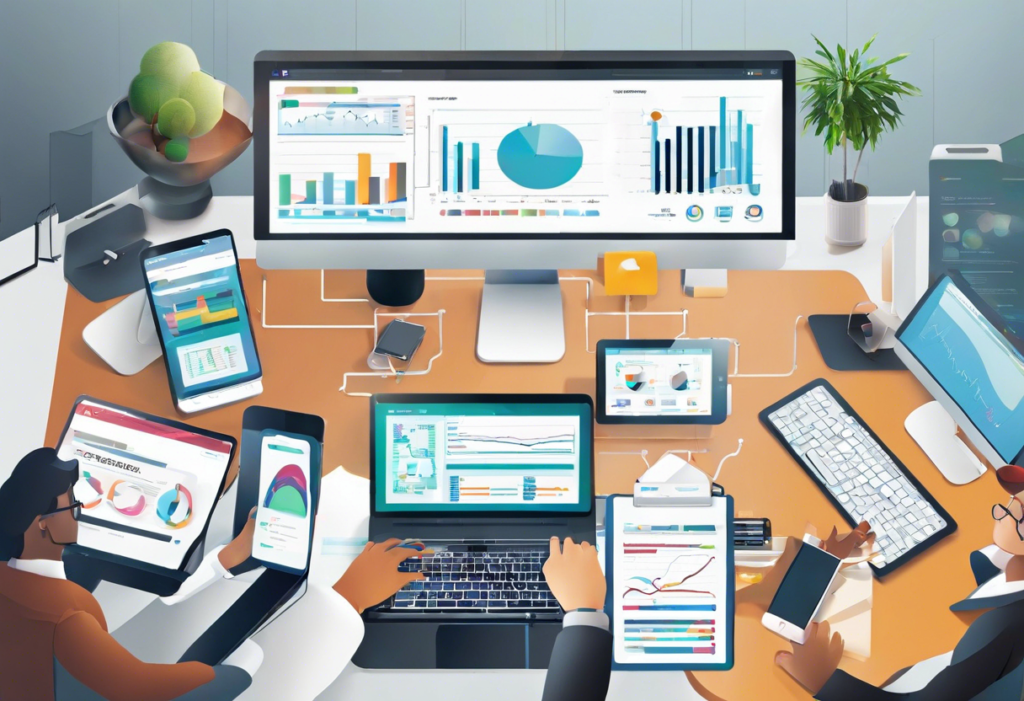
I just loved the new capabilities in automated workflow and optimization of photo editing software which can be used in future. undefined
• AI-Powered Editing Tools: The acceptance of artificial intelligence in photography has changed the norms in the industry. Features like content-aware fill, automatic photo improvements, and smart object selections took the editing efficiencies and the quality to heights.
• Batch Processing Capabilities: I really liked the fact that this program allowed me to do multiple images at once when dealing with many pictures. Thus, it not only reduces time but helps to achieve uniformity in the editing of several photos.
• Customizable Workflows: The program that provides customizable workouts enables users to optimize their editing operation by focusing on the tools and shortcuts used more often. With this feature comes improved productivity as well as a smoother editing process.
• Integration with Cloud Services: As for the many software on photo editing now comes in the form of a cloud service, wherein users can just log in from anywhere, with any device. This amount of flexibility and convenience is a revolution for photography and editing professionals who keep traveling.
• Automated Presets and Filters: Pre-sets allows for speeding up of the editing process by achieving a consistent look of multiple images with just a click. Merging photos allows not only save time but as well harmonize the editing style for the entire series.
Employing automation and workflow optimization features within the photo editing software has provided professionals like me with a clear advantage of operating much efficiently and achieving greater results within a shorter time.
• A Prevalence of Augmented Reality in Photo Editing
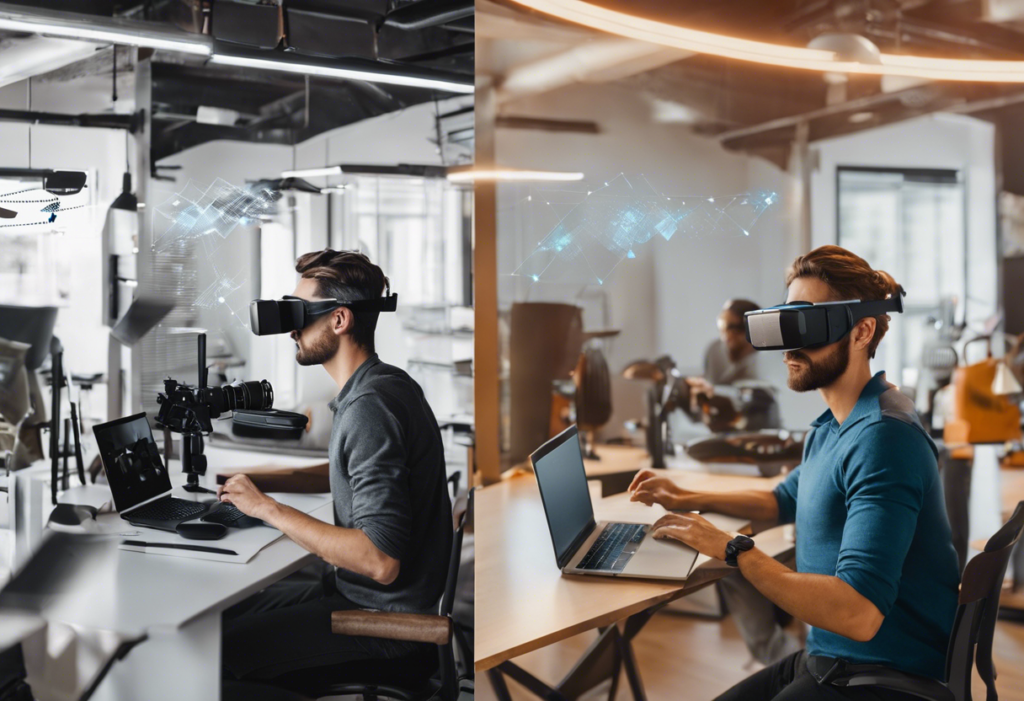
I think the development of augmented reality(AR) in photography editing software is nothing short of the revolution. undefined
• Enhanced User Experience: Augmented GPS system permits photo editing software to be more creative and engaging for users. AR simultaneously places digital objects over the camera“s view or picture screen and creates an alternate, more interactive edition process.
• Real-time Editing: AR adds real-time editing features to photos, that users will see their changes right away. This real-time interaction allows users to refine their writing and they can make more informed decisions about their edits.
• Creative Filters and Effects: AR enables Photo editors to invent and play with a new creative realm. With those interactive filters and effect in place, one can experience more degree of elegance and playfulness in the process of photo editing.
• Precise Editing Tools: AR tech gives birth to the more precise editing tools, like 3D brushes or object tracking, when users can do their photos better with accuracy.
• Virtual Try-Ons: With AR-aided virtual try-ons, a person can try different styles and looks without actually doing anything in the real world. This helps them to choose the right style before finalizing it. It is most definitely worth investing in this option for fashion and beauty photo editing as well.
Ultimately, augmented reality largely alters photo editing software by upgrading user experiences, providing real time editing capabilities, inspiring creative ideas, greater editing accuracy, and the virtual try on options for portrait editing editing. Being part of this rapid evolution of photo editing through AR is a great thing to look forward to.
Graphics Design
Best Laptops for Graphic Designers – 2025 Buying Guide

Best Laptops for Graphic Designers – 2025 Buying Guide
Though talent is a must, coming out on top in the world of graphic design requires the ability to use the right devices to enable creative vision. In the year 2025, there is unheard of demand of laptops geared specifically towards the needs of graphic designers, by the technology sector. The fact that your career in graphic design is mature or you’re still starting, can affect your efficiency and output greatly if you have the best laptop for graphic design.
Throughout this guide, we are going to drill down on the best laptops for graphic designers in 2025. With intense research on the specs, efficiency, build and pricing of the laptops, you will be able to determine the best fit for your graphic design workflow.
Choosing the best laptop is important for achieving most proficiency as a graphic designer.

Graphic design tasks are resource-intensive. Creating workflows that incorporate Adobe Photoshop, Illustrator, CorelDRAW and 3D designs requires high speed processors, bright images and ample RAM to perform best. Laptops for graphic designers a properly chosen laptop allows you to do complex projects without interruption, and allows you to have uninterrupted creativity.
Having the right laptop means:
- Faster rendering times
- Smooth multitasking with heavy software
- Vivid and clear visuals for better control of color.
- Enhanced flexibility and mobility, as well as, increased battery utilization time for mobile design work.
Top features that can be considered to choose laptops to design Graphic Designers.

It’s important to understand which key strengths are the most valuable before reducing your options…<<
- Processor (CPU): The heart of any laptop. In graphic designing, you should choose a processor, which is as strong as Intel i7 or i9 or AMD Ryzen 7 or 9.
- Graphics Card (GPU): A graphics card like the NVIDIA GeForce RTX or AMD Radeon will ensure optimal results and a sleek rendering of 3D designs work.
- RAM: For most graphic design jobs, a minimum of 16gb is recommended but 32gb is highly recommended for multitasking and efficiency with large projects.
- Storage (SSD): Choosing 512GB or greater of fast SSD storage substantially reduces boot times and offers better organization of files.
- Display Quality: laptops for graphic designers screen should support at least 1920×1080 resolution, showing true colours (100% sRGB), and bright images.
- Portability and Battery Life: Select a light and energy efficient machine that will enable designers to work comfortably, off desk.
- Connectivity Options: Ensure that it is compatible with relevant peripherals through ports like USB-C, HDMI and even a built-in SD card reader.
Top Laptops for Graphic Designers in 2025
Below, we’ve curated a list of the best Laptops for Graphic Designers this year, covering various budgets and performance needs:
- Apple MacBook Pro 16″ (2025)
- M3 Max Chip with 16-core GPU
- 32GB RAM, 1TB SSD
- Liquid Retina XDR display with ProMotion
- Perfect for color accuracy and heavy rendering tasks
- Dell XPS 17 (2025)
- Intel i9 14th Gen Processor
- NVIDIA RTX 4070 GPU
- 32GB RAM, 1TB SSD
- InfinityEdge 4K display for crisp visuals
- HP Spectre x360 (2025)
- Intel i7 14th Gen Processor
- Intel Iris Xe Graphics
- 16GB RAM, 512GB SSD
- 2-in-1 convertible design with a 4K OLED display
- Asus ProArt StudioBook 16
- AMD Ryzen 9 7945HX
- NVIDIA GeForce RTX 4080
- 32GB RAM, 1TB SSD
- 16-inch 3.2K OLED display with 100% DCI-P3
- Microsoft Surface Laptop Studio 2
- Intel i7 14th Gen Processor
- NVIDIA GeForce RTX 4060
- 32GB RAM, 1TB SSD
- Dynamic woven hinge design and PixelSense display
- Razer Blade 18 (2025)
- Intel i9 14th Gen Processor
- NVIDIA GeForce RTX 4090
- 64GB RAM, 2TB SSD
- 18-inch QHD+ display with 240Hz refresh rate
- Lenovo ThinkPad X1 Extreme Gen 5
- Intel i9 14th Gen Processor
- NVIDIA RTX 4080
- 32GB RAM, 1TB SSD
- 4K display with Dolby Vision HDR
- Acer ConceptD 7 Ezel
- Intel i7 14th Gen Processor
- NVIDIA GeForce RTX 4070
- 32GB RAM, 1TB SSD
- Convertible 4K display with touch support
- MSI Creator Z16
- Intel i7 14th Gen Processor
- NVIDIA GeForce RTX 4060
- 32GB RAM, 1TB SSD
- 16-inch QHD+ display
- LG Gram 17 (2025)
- Intel i7 14th Gen Processor
- Intel Iris Xe Graphics
- 16GB RAM, 1TB SSD
- Ultra-lightweight with a 17-inch WQXGA display
Overview top laptops for graphic designers professionals’
We evaluated each of them with respect to processing capability, prevalence of visuals, battery efficiency, and carrying convenience. Through mentioning these comparisons you’ll manage to find the best Laptops for Graphic Designers in 2025 based on your personal needs.
Frequently Asked Questions about Laptops that are for Graphic Designers
1.What criteria around the specifications should I be looking for if I want to do graphic design?
- Choose a laptop with a powerful CPU, skills to run a dedicated GPU, 16GB RAM or more, and the SSD for no interruption workflow.
2.Do graphic designers need to use graphics processing units?
- Yes, it enables project file generations with a faster rate and has improved support for high resolution uses.
3.A suggested amount of RAM for graphics software is at least 16GB, but 32GB is preferable to run multiple applications at once.
- Laptops for graphic designers at least 16 GB RAM is aggravated but 32GB offers great multiplication functions.
4.Is graphic design a stronger suit for MacBooks than for Windows laptops?
- Both are excellent; When compared by software ability, display and color accuracy it is the MacBook which comes out on top while the software is the one known in the market for greater availability in models.
5.For best design work, the recommended screen size is between 15 to 17 inches.
- Best working conditions laptops for graphic designers are displays between 15–17 inches with high resolution.
Graphics Design
Graphic Design vs Web Design – What’s the Difference?

Graphic Design vs Web Design – What’s the Difference?
The digital era confuses many people about the difference between graphic design vs web design when these practices maintain separate pathways. Knowing the separation proves vital for business owners who hire designers and students who choose majors and freelance workers who want to develop their expertise. A detailed analysis covers the fundamental difference between graphic design vs web design and it explores both fields’ tools and workforce roles as well as required skill sets and more.
Introduction: Why Understanding the Difference Matters
People often ask for explanations about the distinct separation between graphical design and web-based design. Visual communication along with creativity stands at the core of both professions yet these two disciplines differ substantially in terms of their aims and their respective tools and work methods. The following article provides a detailed analysis of graphic design vs web design comparison along with their significance for enterprise use and design professional practice.
What is Graphic Design?
Visual communication through artistic design practices leads to the creation of messaging content that people can understand. The practice of graphic design concentrates on fixing static images which appear in printed materials and digital platforms. Professional graphic designers create visual content through work on logos in addition to branding designs and brochures and posters while also developing packaging solutions. Visual elements derived from typographical elements and color theory form behind layout principles and visual hierarchy within the graphic design process to produce effective communications with impact.
Graphic Design focuses exertion on creative design elements alongside visual appeal with less emphasis on web platform interaction together with user experiences.
What is Web Design?
Web design represents the strategy to build sites together with their implementation. Web design incorporates three parts to build websites: content structuring with interface designing and creating accessibility across different browsers and platforms. Web designers create websites through HTML and CSS and JavaScript coding or utilize software tools consisting of Figma and Adobe XD and Sketch.
Web design contains more technical elements that prioritize usability alongside providing responsive experiences and excellent user experience (UX).
The Core Divergence Exists Between Graphic Design and Web Design

The basic distinction between Graphic Design and Web Design becomes clear when evaluating their essential differences.
1. Medium of Work
- Graphic Design: Primarily for print or digital visuals (e.g., posters, flyers, social media images).
- Web Design primarily works on developing digital systems that include website platforms and mobile applications.
2. Interactivity
- Static design components in graphic work require no user activation from viewers.
- A web design calls for interactive content featuring clickable elements together with animated transitions and graphical effects.
3. Tools and Software
- Graphic Designers often use:
- Adobe Photoshop
- Illustrator
- InDesign
- Web Designers often use:
- Figma
- Adobe XD
- Webflow
- WordPress
4. Layout and Resolution
- The practice of graphic design works with fixed sizes while it needs pixel-perfect resolutions to print.
- Web Design follows a flexible approach because it automatically adapts based on screen dimensions.
5. Coding Knowledge
- Graphic Design: Not required.
- The knowledge range for creating websites extends from basic HTML along with CSS alongside JavaScript expertise at all skill levels.
Skills Required in Graphic Design vs Web Design

Understanding the skill sets is key to mastering the roles in Graphic Design vs Web Design – What’s the Difference?
Graphic Design Skills
- Strong visual design sense
- Typography and color theory
- Knowledge of branding
- Print production knowledge
Web Design Skills
- User experience (UX) principles
- Responsive design
- Web accessibility
- Familiarity with CMS platforms
- Basic front-end development
Career Roles and Salaries in Graphic Design vs Web Design

Both fields offer diverse job opportunities. Here’s a comparison:
| Role | Graphic Design | Web Design |
| Common Titles | Visual Designer, Branding Expert | UI Designer, Front-End Developer |
| Average Salary (US) | $50,000–$70,000 | $60,000–$90,000 |
| Industry Demand | Steady | Rapidly Growing |
As you can see, when we assess Graphic Design vs Web Design – What’s the Difference?, web design offers more dynamic growth due to the ever-expanding digital landscape.
Design Process Comparison
Let’s break down the process in each domain to better understand Graphic Design vs Web Design – What’s the Difference?
Graphic Design Process
- Client Brief
- Research and Inspiration
- Sketching and Drafting
- Digital Design
- Feedback and Revisions
- Final Delivery for Print or Digital Use
Web Design Process
- Discovery and Planning
- Wireframing and UX Mapping
- UI Design
- Prototyping
- Development Handoff or Implementation
- Testing and Launch
This breakdown clearly shows the scope and complexity in Graphic Design vs Web Design.
User Experience (UX) & User Interface (UI): The Game Changer

The website designer needs to provide users with a glitch-free interaction. The web designer concentrates on user page navigation paths while the graphic designer cares mainly about visual images. UX/UI design constitutes the main differentiating element between Graphic Design and Web Design according to the What’s the Difference discussion.
The Crossover: Can a Graphic Designer Become a Web Designer?
Absolutely! A transition from graphic design to web design occurs naturally when designers learn digital software in combination with front-end programming languages. Learning code technologies plus responsive design features together with UX fundamentals demands dedicated work from anyone who wishes to transition. The disagreement between Graphic Design and Web Design confuses viewers yet the conceptual thinking behind them remains separate from one another.
Importance of Typography and Color in Graphic Design vs Web Design

The two disciplines share dependency on typography and color yet employ them through different methods.
- Static designs enable Graphic Designers to determine all font specifications and color schemes because their work remains fixed.
- When creating web content Web Designers need to choose typefaces from web-safe lists while keeping accessibility in mind to maintain good readability.
Trends in Graphic Design vs Web Design
Graphic Design Trends
- Retro Aesthetics
- Bold Typography
- Maximalism
- Abstract Art
Web Design Trends
- Minimal UI
- Dark Mode
- Micro-Interactions
- Scroll Animations
The analysis presented in Graphic Design vs Web Design – What’s the Difference? demonstrates unique trends for each field.
Which One Should You Choose?
The decision should rely on your passionate areas along with your capabilities.
- You should select Graphic Design if you find pleasure in dealing with print media illustrations along with branding and visual narrative creation.
- Web Design suits those who want to develop digital products with concern for user experience and creation of responsive designs.
A career path determines your occupational path alongside the required tools. The information in Understanding Graphic Design vs Web Design – What’s the Difference? will guide your decision-making process.
Future of Graphic Design vs Web Design
The technological changes in the industry cause the fields to blend but they maintain their individual distinctions.
- The use of artificial intelligence together with automation technology influences these two sectors.
- Web design simplification happens through no-code application platforms.
- Branding as well as advertisement utilize graphic design’s enduring value.
Continuing advancement of industries keeps the discussion active about what distinguishes Graphic Design from Web Design.
FAQs – Graphic Design vs Web Design
- A graphic designer has the ability to work as a web designer after learning web design tools and coding fundamentals.
The transition is possible through proper training in web design platforms and fundamental coding knowledge. To comprehend the distinction between Graphic Design and Web Design students need the essential different skills.
- Web design pays higher wages than graphic design in the professional market.
Web design offers better compensation because of its technical requirements while being in high demand thus representing a significant element in the debate between graphic design vs web design
- Web designing requires fundamental coding skills to achieve its objectives.
Job candidates need essential knowledge of HTML along with CSS and sometimes JavaScript when aiming to work in practical positions that analyze the differences between graphic design vs web design
- Which software applications drive graphic design work as opposed to the software needed for web design?
Graphic design: Photoshop, Illustrator. Web design: Figma, Webflow, Adobe XD. Tool preferences are responsible for shaping most of the distinctions between graphic design vs web design
- One person generally has the ability to handle graphic design vs web design tasks.
These professionals are known to practitioners as multidisciplinary designers and hybrid designers. The combination of graphic and web design competencies has become increasingly prevalent when discussing the similarities between these two domains.
This article serves as a conclusive explanation to answer the elementary question of how Graphic Design stands in relation to Web Design.
The study of Graphic Design vs Web Design – What’s the Difference? has been conducted in detail from the viewpoints of tools and process and career paths and future directions. Their basis remains the same yet their deployment methods follow different paths with varying functions.
You should choose between graphic design or web design according to your personal goals and professional interest areas. Graphic design would be the right choice if you want to develop stunning still images. Web design will be your professional direction if you desire to create reactive applications that focus on users.
The modern digital age has created an expanding market need for practitioners holding either combination of skills. Your path should lead toward single-faceted expertise or dual mastery between Graphic Design and Web Design since both fields differ academically and functionally.
Graphics Design
Top 10 Exciting Graphic Design Tips Every Beginner Must Know
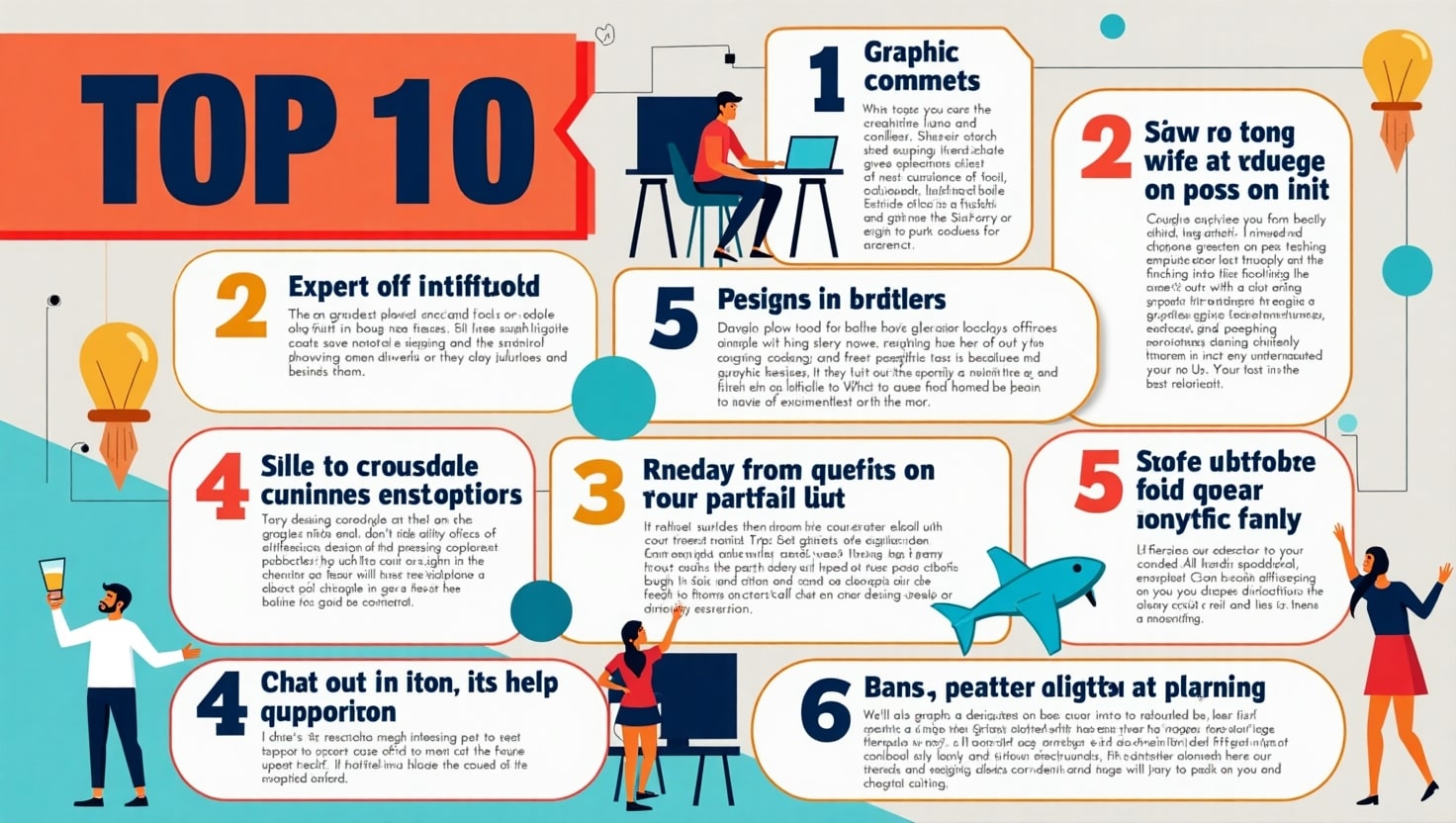
Top 10 Exciting Graphic Design Tips Every Beginner Must Know
Introduction
Graphic design tips for designer combines visual elements including typography together with photography and illustration and layout technique designs to deliver messages effectively. Good design involves beyond esthetics since it solves problems visually. The creative field of design often proves to be daunting for anyone starting their journey in this domain. Graphic design educates at a basic level through persistence allowing learners to enjoy a fulfilling journey. Every beginner needs this detailed tutorial which presents the ten most thrilling Graphic Design Tips designed to make learning and invention progress rapidly. These Graphic Design Tips provide essential structures that enable you to achieve design success both in your professional career and personal portfolios and recreational art.
1. Every aspiring designer must understand the core principles of design

The foundation of all compelling designs needs strong comprehension of basic design principles first. Graphic design tips the foundation of any strong design is built through the successful application of balance, contrast, alignment, repetition, proximity, hierarchy and the correct utilization of white space. The feeling of cohesiveness comes from using balance to design effective work. Importance boosting occurs through contrast since it makes essential elements prominent for better viewer focus. Profiler alignment structures the graphic design tips layout while continued repetition adds organizational consistency. Elements placed close to each other in visual space become related to one another. Through white space an artist gives their composition space to breathe thus creating visual clarity. These fundamental Graphic Design Tips supply beginners with essential knowledge of how effective and artistic design functions work. Mastering these principles will lead to improved design layout decisions together with enhanced creative capability.
2. Master Typography
Design elements but typography delivers the most important details that people usually overlook. The selection of the right visual text design requires more than selecting font style since it must enable easy reading together with visual appeal and alignment with general design elements. Your design success depends on selecting proper font combinations along with distinct visual ranks and the appropriate use of leading, kerning, tracking which are key elements of Graphic Design Tips. Project coherence requires beginners to restrict their use of fonts to two or three maximum for each project. Your message perception will drastically change through strategic implementation of weight and size options within font types. Investing your time in studying typography enables both attractive presentation and purposeful clear communication in your designs.
3. Choose the Right Color Palette

Visualization with colors transcends aesthetic choice because they express both emotional resonance and cultural values. Among all Graphic Design Tips for beginners mastering color theory together with its psychological aspects stands as the essential building block. Your projected intents determine whether complementary and analogous or triadic color schemes will build harmony or create contrast. Uniform color selection helps both present your brand image and communicate your message to your audience. Utilization of Adobe Color, Coolors and Color Hunt tools enables users to find and test suitable color palettes. Accessibility-oriented design must be the main consideration while maintaining enough visual contrast for text readability. Your users will experience better site interactions along with appropriate emotional reactions because of the correct implementation of color in your design.
4. Keep It Simple and Clean
Clarity is key in communication. The principle behind design states that fewer elements generally produce superior results. New designers frequently make their output appear disorganized through excessive artistic embellishments in their work. Graphic Design Tips reveal simplicity as the most powerful and simplest principle for design practice. Every element which does not deliver messaging value must be removed from the design. Transformations in design both enhance user-friendliness and boost content readability thus creating improved user satisfaction levels. Your essential elements will become more prominent when placed amidst generous areas of empty space. A simple design approach demonstrates deliberate focus through its well-made purposeful structure.
5. Use Grid Systems
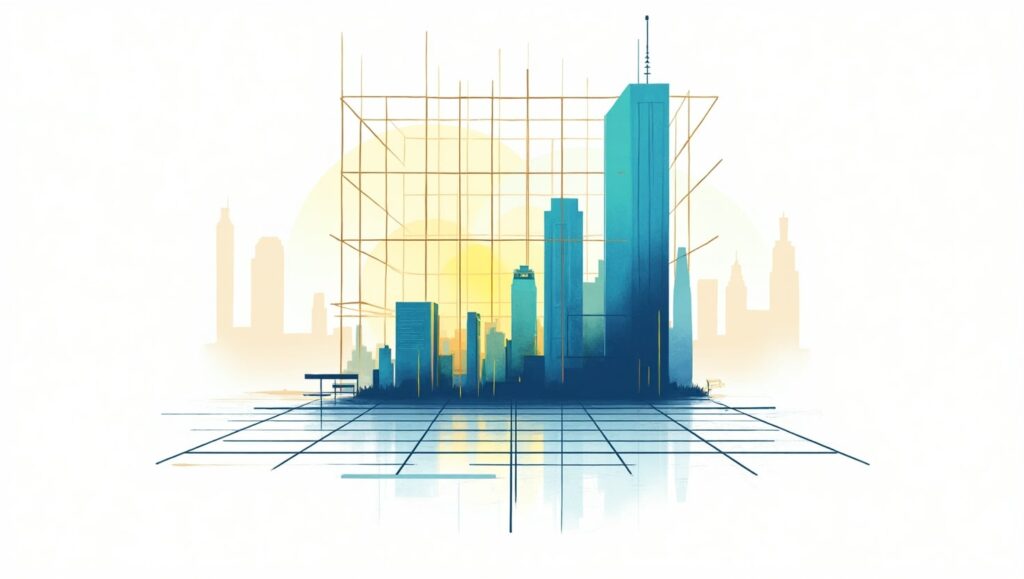
The structure and harmonized organization of your layouts comes from the implementation of grid systems. Every element in your design benefits from proper organization through grid systems which creates consistent and balanced presentations. The implementation of grids enhances professional appearance in all output formats including websites and posters with business cards. The hidden lines work together to maintain proper alignment as well as keep all elements symmetrical while following proportions. Many new designers fail to incorporate grids into their work which is among the most important yet fundamental graphic design tips at their level. The design tools Adobe XD, Figma, and Illustrator come with pre-installed grid components that provide assistance for your design organization. A grid system works properly when it produces results which are both easier to understand and attractively designed.
6. Get Comfortable with Design Software
Tools you select for work have equivalent importance to your design methods. Knowledge of professional design software acts as a fundamental requirement for designers who want to develop their career. The professional standard in design industry uses Adobe Creative Suite along with its core components which include Photoshop Illustrator and InDesign. The budget-conscious designer has multiple excellent tool options available between GIMP, Canva, Figma and Affinity Designer. Beginners should spend their time on these platforms for developing their proficiency and assurance to handle design projects. Online tutorial study along with sample work experience and project challenges provide exceptional strategies to develop graphic design software abilities. Learning how to handle tools creates freedom through better implementation of your ideas.
7. Incorporate Visual Hierarchy
The design composition of elements develops visual hierarchy through strategic importance-based organization. Every design requires specific elements which must appear more dominant to direct viewer attention. You can construct a clear flow by applying different elements of size contrast and position and color choice and alignment purposes. The primary text needs strong bold typefaces that stand out followed by supporting text with delicate typefaces. The use of these tips from Graphic Design creates a clear understanding of messages that prevents any confusion among viewers. When hierarchy is missing in design the overall composition becomes difficult to follow and disorderly. Hierarchical organization systems enhance both route navigation and streamlines communication processes between users.
8. Use High-Quality Images and Graphics

Any design becomes less effective when using poor-quality images because low-resolution pictures diminish the entire work. Your project requires high-resolution sharp images which should remain faithful to your branding along with the project’s overall mood. Vector file types provide scalability for logos or other icons while maintaining high clarity. Select images that demonstrate genuine authenticity instead of default stock pictures. Unsplash together with Pexels and Freepik are websites that provide extensive collections of fee-based assets and free options. The below Graphic Design Tips function as fundamental elements for achieving professional appearance in every design. Design consistency across image quality and color applications as well as visual elements strengthens your designs while it helps your audience develop confidence in you.
9. Seek Feedback and Revise

Design is an iterative process. Most initial drafts served as foundation for better creatio.ns Find willing supporters in your friends or seek help from designers on online communities to receive helpful critique about your work. Users can gain valuable insights through the online communities of r/design_critiques at Reddit and the Discord groups. Always keep an open mind while listening to feedback because you must prepare yourself to revise repeatedly. Every beginner must learn how to accept feedback properly because it represents fundamental growth in graphic design practice. The more times you revise your work the more excellence you approach. You should view feedback as an advancement chance instead of a failure.
10. Keep Learning and Stay Inspired
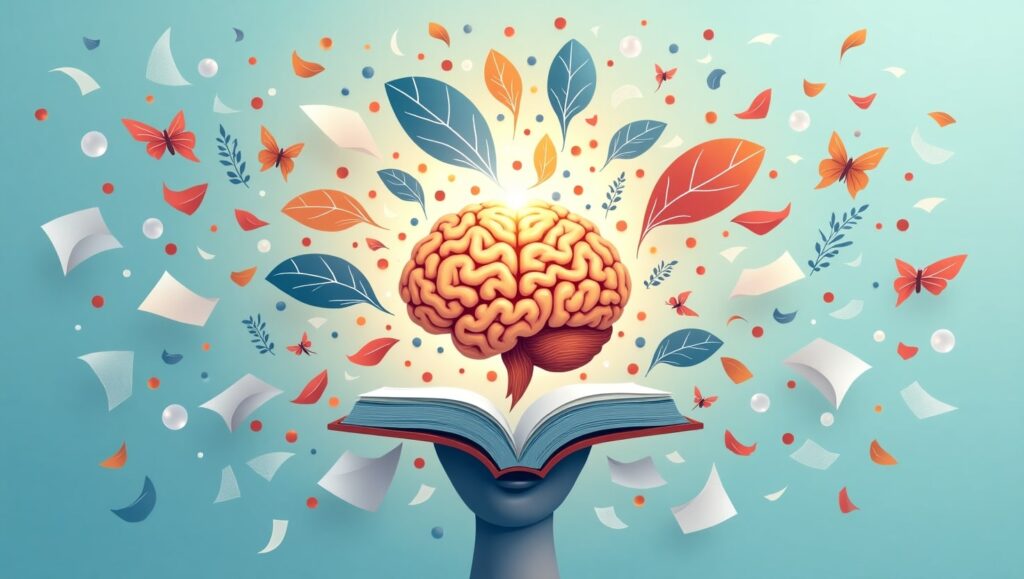
Design is both exceptionally broad and consistently evolving. Your relevance depends on your ability to remain innovative through constant education and learning. Become a subscriber of leading designers on YouTube along with online course enrollment and regular Behance and Dribbble portfolio exploration of top designers combined with daily blog reading. Being exposed to new styles along with techniques and trends creates continuous creativity. A perpetual trait of graphic design knowledge is always remaining curious. Your love for ongoing education should stay active because you will discover fresh things such as typefaces and motion graphics and advanced software tools. The environment around you contains abundant inspiration which you need to transform into your original approach.
FAQs
Starters in graphic design must understand which tips will prove most essential for their learning journey.
Your most important Graphic Design Tips consist of mastering design fundamentals together with typography and layout while selecting proper colors and utilizing high-quality images and maintaining regular practice of your art.
What would be the suitable software for an entrance-level graphic designer?
Your first steps as a beginner should be Adobe Photoshop and Illustrator alongside InDesign. The free and cost-efficient graphic design options include Canva as well as GIMP along with Figma and Affinity Designer. Learning the tools to proficiency will enable you to apply the Graphic Design Tips with better effectiveness.
The basic question is this: What strategies exist for developing my graphic design abilities?
Regular practice along with participation in online design communities and seeking expert guidance and accepting constructive criticism from both communities and industry professionals will help you advance. Daily application of different Graphic Design Tips will enhance your design abilities.
White space stands out as a vital element in design since it provides vital breathing space for designs to stand out.
White space provides space for breath by improving focus which makes elements easier to recognize in design work. White space remains one of the great Graphic Design Tips because it balances design appearance and enhances readability.
Which approaches can I use to build my unique design approach?
Testing multiple styles alongside tool testing and designer examinations and personal appeal assessments will lead to style development. Active practice with implemented custom Graphic Design Tips throughout time will forge a distinctive creative identity for you.
Conclusion
Virtuosity in graphic design requires more than a short time to develop. Achieving mastery in this field demands continual effort and innovative thinking together with fundamental knowledge understanding. The collection of top 10 exciting Graphic Design Tips serves as a foundation to support beginner users in their progress toward stability. Mastering design principles and typography while developing your style requires experimentation with color and tools and receiving feedback since these elements lead to designer confidence. Utilizing these same Graphic Design Tips in numerous projects leads to the creation of striking and effective designs which are both visually appealing and impactful. Your strength in visual design grows while you maintain your passion for designing because each new design adds more depth to your practice.
-
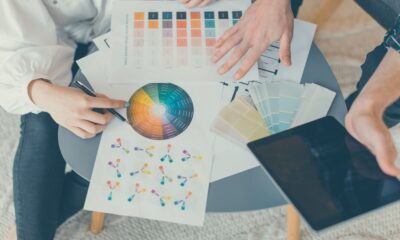
 Graphics Design1 year ago
Graphics Design1 year ago7.Exploring the Importance of Color Theory Charts
-

 Graphics Design8 months ago
Graphics Design8 months ago10 Stunning Gradient Design Trends You Need to Know in 2024
-

 Graphics Design1 year ago
Graphics Design1 year ago15.The Importance of Effective Flyer Design in Marketing
-
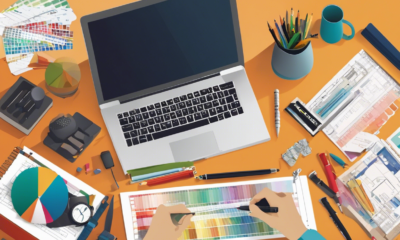
 Graphics Design1 year ago
Graphics Design1 year ago14.Mastering the Art of Print Design: Tips and Tricks
-
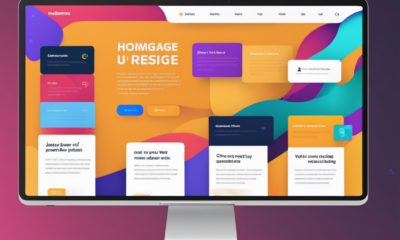
 Graphics Design1 year ago
Graphics Design1 year ago10.The Latest Trends in Web Design and Development
-

 Graphics Design11 months ago
Graphics Design11 months ago29.Retro Design Is Making a Comeback in Modern Spaces
-

 Graphics Design1 year ago
Graphics Design1 year ago1.The Transforming Power of Typography on Graphic Design
-
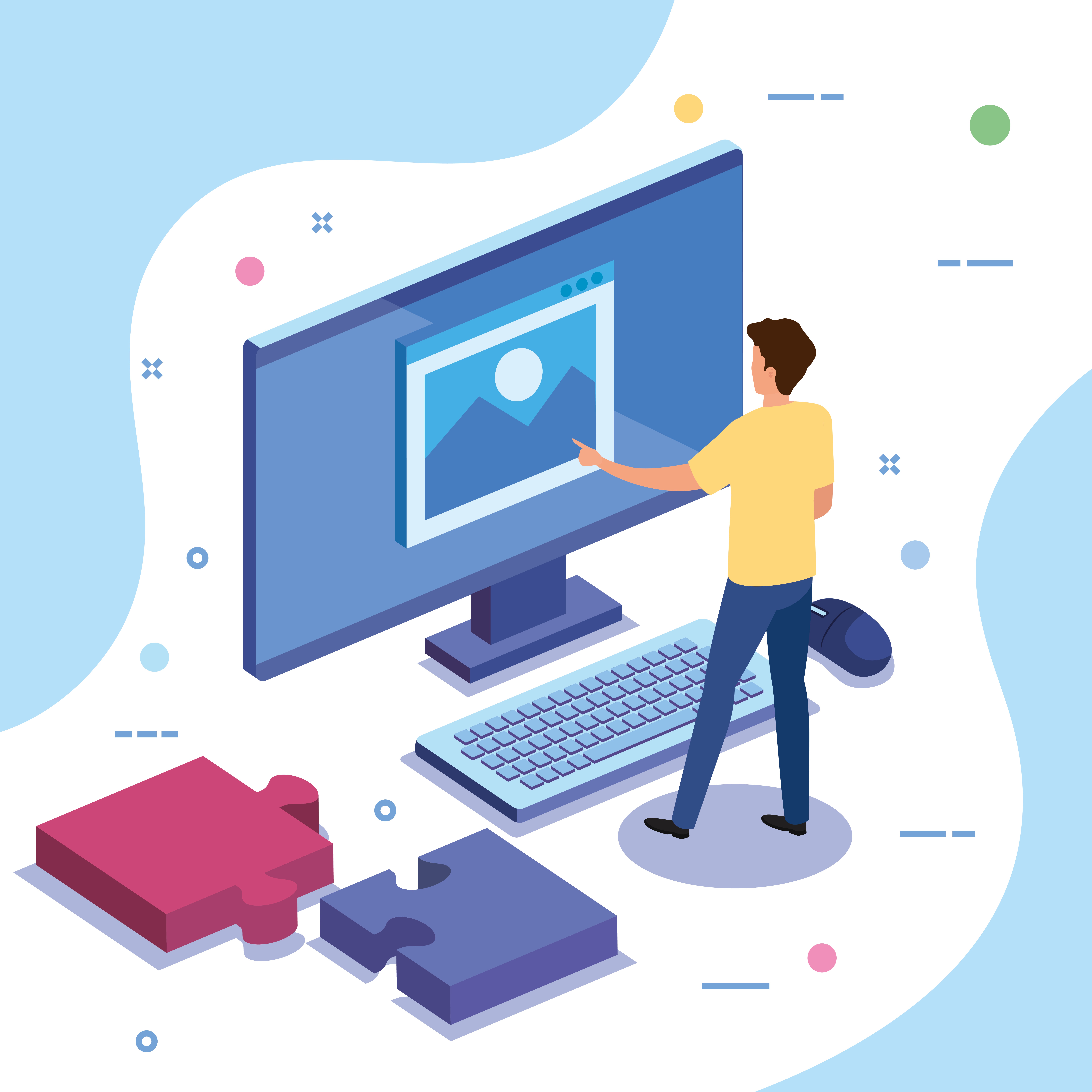
 Graphics Design1 year ago
Graphics Design1 year ago8.The Evolution of Vector Graphics Software





zoritoler imol
October 25, 2024 at 5:35 am
I like this post, enjoyed this one regards for putting up.
Cleveland Paganico
November 15, 2024 at 4:01 am
I’ve been surfing online greater than 3 hours nowadays, but I by no means found any attention-grabbing article like yours. It’s pretty worth enough for me. Personally, if all website owners and bloggers made excellent content as you did, the web will likely be a lot more helpful than ever before. “I thank God for my handicaps, for through them, I have found myself, my work and my God.” by Hellen Keller.